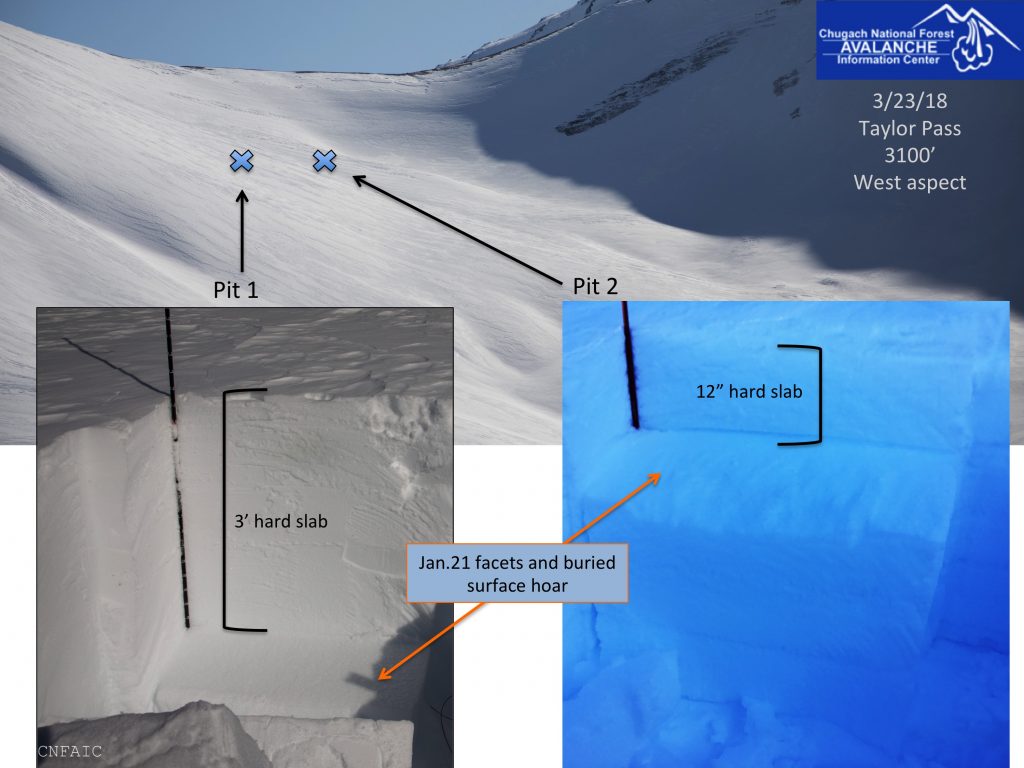Triggering a hard slab avalanche 2-4’ deep is still our primary concern in the backcountry despite the quiet weather. It has been five days since the last human triggered avalanche, and over a week since a wind event triggered some large natural avalanches in our region. Traffic has been light and not many folks have been pushing into steep terrain. Hiding under the snow surface are weak layers in the snowpack formed in January that just will not go away. Without any big changes in the weather, these older layers (facets and buried surface hoar) are becoming more and more difficult to trigger. Hence, we are in a low probability, high consequence situation. The tricky part about this is, the pack appears to be stable but the chance remains for an unmanageable and destructive avalanche if a person hits just the wrong spot. These trigger spots will be in thinner areas of the snowpack near rocks or in scoured areas along ridges. Although triggering a slab remotely is becoming less likely with time, it’s not out of the question on a flat area below or next to a slope. Pay attention to runout zones and minimize your exposure on or under steep slopes. No obvious signs of instability my be present before a slope releases and it may be the 10th skier or snowmachiner onto a slope that finds a trigger point.
Today skies are expected to be mostly cloudy with clear skies through the end of the week. There is little in the way of weather that will impact our old and tired snowpack – except for the sun. We can’t forget that spring is here; even though temperatures have been relatively cool, this could change any day now. Be aware of warming later in the day on Southerly slopes – this may be difficult to assess. Melting surfaces may not be present on low angle terrain in the alpine.
Other avalanche issues to keep in mind:
Wind Slabs: Old hard wind slabs are sitting on a variety of aspects due to prior unusual loading patterns. Steep and rocky terrain may harbor shallow windslabs sitting on old weak snow. This type of terrain (a steep unsupported slope) is also suspect for triggering a deeper slab mentioned above.
Cornices: Many cornices are quite large and teetering over. Temperatures have been cool lately but as we head into warmer, sunnier weather remember this can help de-stabilize them. As always, give cornices plenty of space and limit exposure underneath them.
In the upper elevations we have been tracking a widespread layer of facets mixed with buried surface hoar and in the mid elevations facets are sitting on a slick melt/freeze crust.

The slab on top is 2-4′ thick and very hard due to a strong Northwest wind event that ended last Thursday. This wind event caused unusual loading patterns on a variety of aspects as seen on the Headwall of Seattle Ridge.



